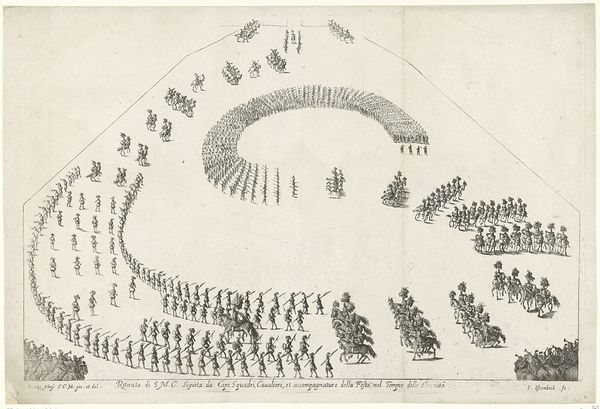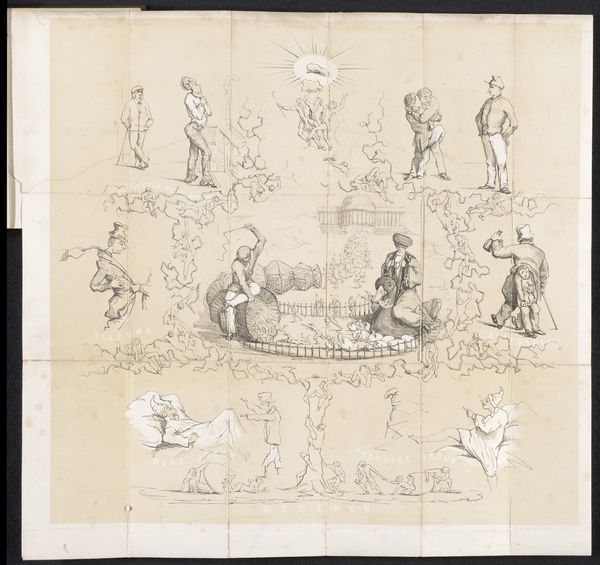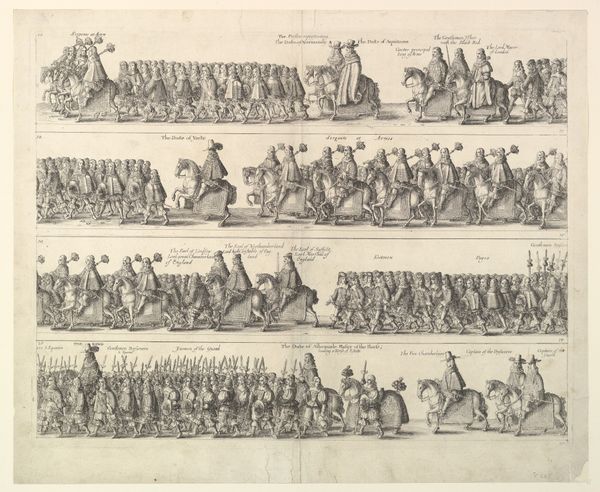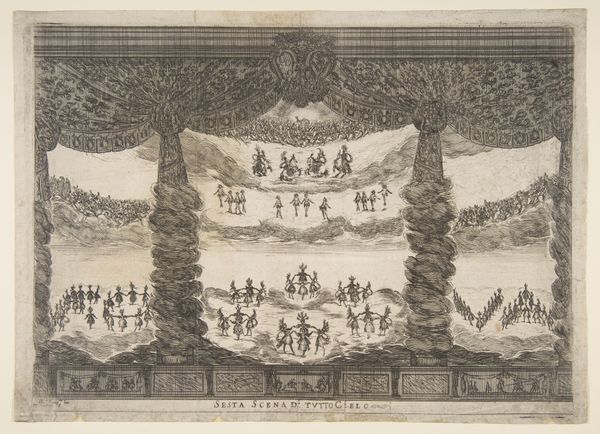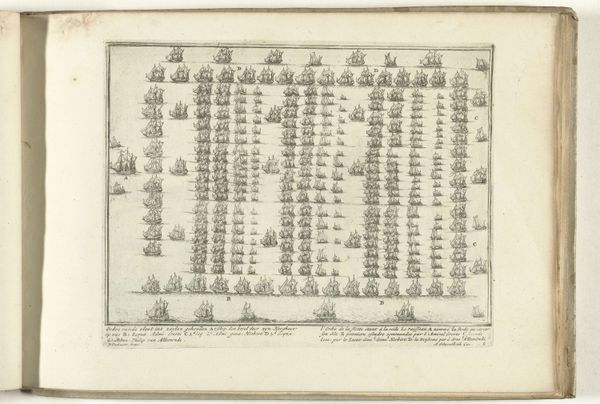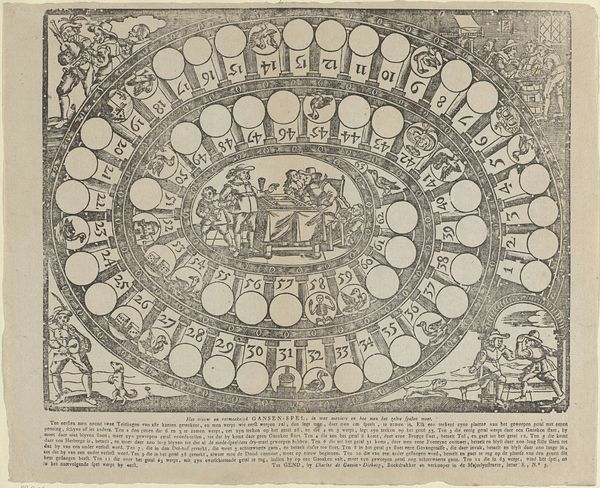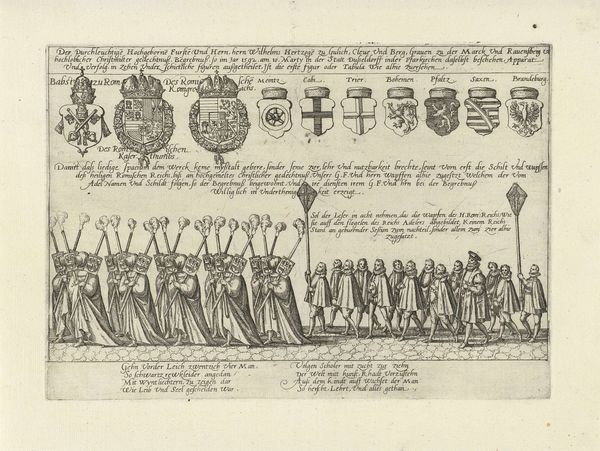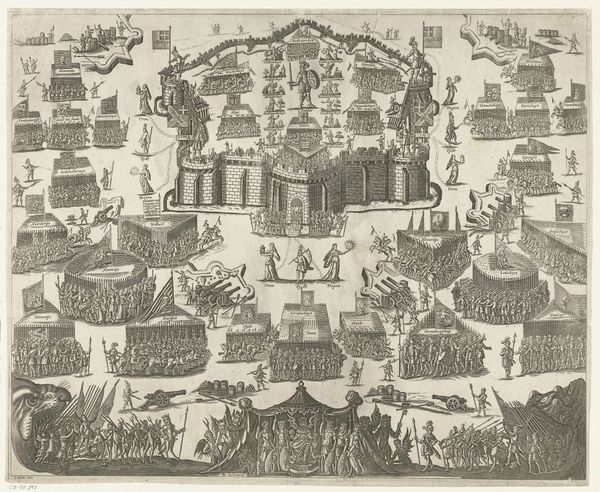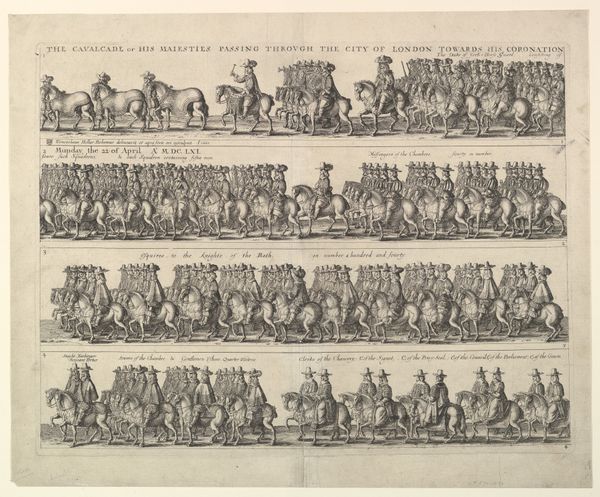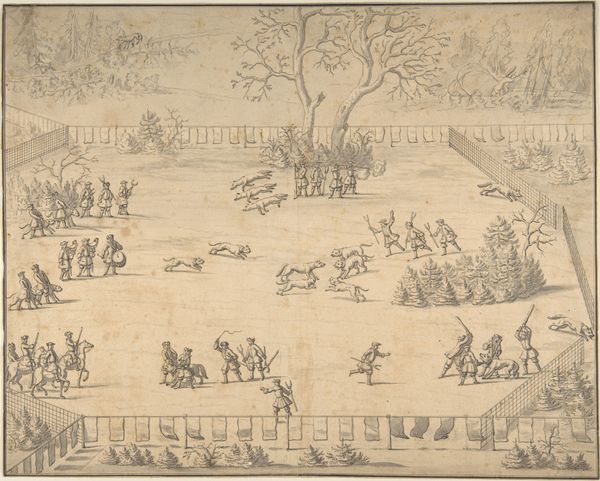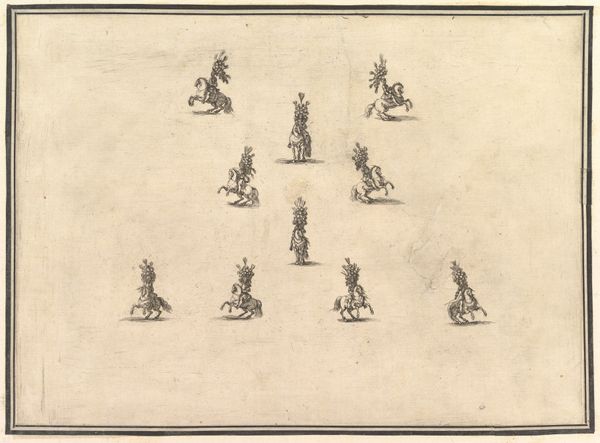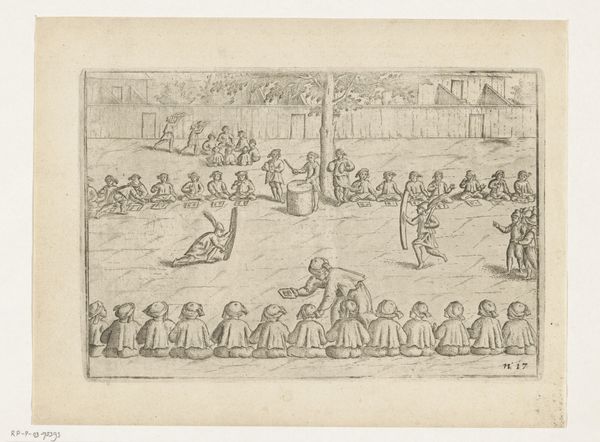
print, engraving
# print
#
landscape
#
11_renaissance
#
line
#
history-painting
#
engraving
Dimensions: height 280 mm, width 360 mm
Copyright: Rijks Museum: Open Domain
Curator: What a fascinatingly precise—yet unsettling—visual! All these rows and arcs, the identical ships, each emitting smoke... It’s almost mechanical, devoid of human emotion, despite depicting a battle. Editor: Indeed. Here, we’re observing “Slag bij Lepanto, 1571,” created by Frans Hogenberg between 1571 and 1573. It is an engraving that is part of the Rijksmuseum collection. And what we see displayed here is Hogenberg’s perspective on the naval Battle of Lepanto. The image’s meticulous composition reminds me of strategic diagrams from military history, the type crafted to rationalize complex geopolitical actions. Curator: Yes, there’s a real tension between its cartographic accuracy and the chaotic subject it depicts. The lines are crisp, definitive. I see meticulous arrangements, contrasting strongly with what would have surely been messy and devastating action on the water. How fascinating that line engraving can be chosen for its cool objectivity here! Editor: The choice of perspective is very interesting as well, isn’t it? Viewing from a detached bird’s-eye viewpoint gives an understanding of scale—hundreds of vessels arrayed—but diffuses all sense of actual battle. The ships of the Holy League, top, engage against the Ottoman fleet. Hogenberg’s image reinforces a particular narrative by visually dominating, the arrangement giving order to an event experienced perhaps as confusion. Curator: Agreed. Semiotically, each identical ship reads less as an individual vessel and more like a repeating motif—a symbol. Hogenberg seems intent to present order above chaos. It is tempting to see the lack of differentiating details across these vessels as evidence of authorial intention or commentary around both sides of this conflict in general. Editor: Precisely, and how these themes interplay. Scale, for instance: a single image designed to convey all this complex information. Consider the implications of turning something so immense and complicated into a consumable image during a time of heightened European tension. The visual’s legibility then becomes critical, serving a powerful role. Curator: So true. Now, looking once more with fresh eyes at Hogenberg’s design… Well, the way meaning is embedded into this is very thought-provoking. Editor: I couldn’t agree more. Considering the context, we see an impactful image which can bring so many historical ideas to bear, offering something of both propaganda and archival significance.
Comments
No comments
Be the first to comment and join the conversation on the ultimate creative platform.

